
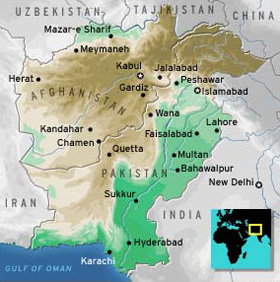 Earlier this month I asked if the Taliban’s rising influence in Pakistan and their removal of Sikhs from the Swat Valley was a harbinger for more extreme religious persecution. This week, two articles caught my eye:
Earlier this month I asked if the Taliban’s rising influence in Pakistan and their removal of Sikhs from the Swat Valley was a harbinger for more extreme religious persecution. This week, two articles caught my eye:
The first depicted multi-religious protests in Kashmir over Pakistan’s inaction in the region. The second implied complicity between the Jawat-ud-dawa (JuD) and the Taliban to use “rescue aid” as a coercive tactic.
The use of “aid” to buy sympathy, garner political favor, or build political support is nothing new, and is described extensively in Machiavelli’s The Prince [source]. Similar concerns were raised in the wake of the Indonesian tsunami, when Muslim communities alleged that Christian aid organizations were forcibly converting orphaned children and the injured by withholding necessary aid. The extent, or veracity, of those allegations was relatively unknown/unquantifiable. Given the Taliban’s extensive campaign-based strategies, in addition to the narrow regional focus of its impact, it should be less difficult to quantify the JuD’s impact.
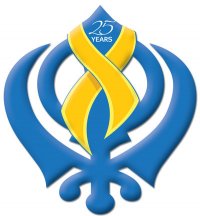 In The Langar Hall, we do our best to keep you up-to-date with the latest 1984 events. From conferences, to concerts, if it’s happening, we’ll post it.
In The Langar Hall, we do our best to keep you up-to-date with the latest 1984 events. From conferences, to concerts, if it’s happening, we’ll post it.
With the 25th commemoration of the Ghallughara, a great initiative called ‘Sukhmani Sahibs for the Sikh Shaheeds‘ (being held the first week of June, 2009) is being coordinated by the Jakara Movement throughout the United States. Starting in California, facebook groups have sprung up in Michigan, and the numbers of people participating are increasing. Texas and Washington DC have added to the list.
From their Facebook page:
The simplest, yet most powerful, thing one can offer another soul is a prayer.
Many of our parents are involved in Sukhmani Sahib groups in their local Gurdwaras. The Sikh Memorial Center is asking these groups, as well as any others that wish to participate, to come together and remember Guru Arjun’s Shahadat and the Memory of the Shaheeds that gave their lives in the third Ghallughara (June 1984). How to we propose this remembrance? We are asking for these groups across the North America to perform Sukhmani Sahib during the first week of June and open the event to their entire local Sangat.
So how can you help? Well if your parents or someone that you know participates within a Sukhmani Sahib group, help us get them on board with this project! This event is not exclusive to parents, if you or your friends would like to put together a Sukhmani Sahib group of your own, contact me.
The coordinators’ task is difficult. For many of us, our mothers are part of these groups and the organizers are calling males at Gurdwaras to get in touch with these groups. If your mother is part of such a group, help the coordinators leap frog the males and send an email to them. At least help out that much. Better is to join your mother in the Sukhmani Sahib. Best of all, start your own group! Get in touch to get the information packet mailed out to you.
AND, if you live near Fremont Gurdwara:
This past weekend, as I was talking to a Punjabi Sikh woman who came to the United States about 13-14 years ago, I heard how agency and perseverance define the experiences of immigrant women in the United States. She told me about the great new apartment she just got for her family and how the laundry is free. A new apartment building with free laundry, that is absolutely awesome! Her smile, confidence, and enthusiasm were strongly lined with struggle and hard work; although she never directly said it. Her hard work and perseverance resounded clearly and loudly as it lay nestled in her comment about how her children had seen a lot of struggle in their lives. This statement meant that they had witnessed her struggle to provide the basic necessities in life, which means not always having access to the privileges other children gain more easily. I sensed her confidence in her and her family’s work ethic, but also her own guilt of not being able to provide more.
This month, New America Media (NAM) released the results of a historic poll on woman immigrants to America. Often the experiences of women immigrants are not fore grounded in immigration research. They and their children are general viewed as the “dependents” of the sojourner husband/father. Their struggle, as the one mentioned above, are rarely brought to the center of the immigrant narrative.
 Rice University senior, Sukhdeep Kaur, has received the Roy and Hazel Zeff Memorial Fellowship – a $25,000 grant, which will allow her to study issues of human rights and access to justice in areas around the world. The news release states:
Rice University senior, Sukhdeep Kaur, has received the Roy and Hazel Zeff Memorial Fellowship – a $25,000 grant, which will allow her to study issues of human rights and access to justice in areas around the world. The news release states:
A political science and policy studies major with a focus on law and justice, Kaur has a longstanding interest in human rights and justice issues that stems from the violent history between the Indian government and Sikhs in Punjab.
For her fellowship, Kaur will travel to four countries — Chile, Rwanda, Israel and France — to work with minority populations on the issues of access to human rights and justice.
I recently interviewed Sukhdeep and we discussed how she first got involved with human rights. “I knew I wanted to work with law and justice but wasn’t really sure whether to focus on civil rights or human rights,” Kaur said. However, after taking a human rights course her sophomore year and her personal study of the violence toward Sikhs in India in 1984 and subsequent human rights violations, she decided to make this the focus of her field work.
Thematically Sikh paintings are rare. Thus, when I came across the paintings below, I thought I should share. The oil paintings below are the work of Jaswant Singh Zafar. He’s a poet, photographer, and painter in his free time and an engineer in Ludhiana by day. This year, he’s spending his free time creating a series of paintings under the theme of ‘Gurbani.’ The paintings completed thus far weave the mool mantar through various aspects of nature, shapes, and other backgrounds.
At the end of the year, the series will be in an exhibition at the Artmosphere Gallery in Ludhiana. Artmosphere was created to provide a platform for budding artists in Ludhiana and Punjab such as Jaswant Singh Zafar. Such an endeavor cheers me and gives hope that the visual arts scene there is growing.

I appreciate these paintings because they provide some insight into the art scene in Punjab- an example of what’s happening there. More works from this series can be found here.
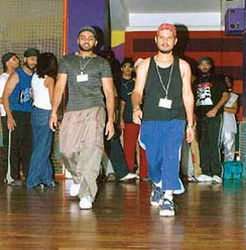 Sometimes (or may be it more often), you read an article that just doesn’t seem to make any sense. My google newsfeeder caught on such article titled: Sikh youth moving away from teachings of Sikhism. The author of the article Harleen Kaur seems to be at all places at once, reporting stories on Chandigarh, Malaysia, Leicester, and New York all on the same day. It does raise eyebrows into the type of reportage it can claim.
Sometimes (or may be it more often), you read an article that just doesn’t seem to make any sense. My google newsfeeder caught on such article titled: Sikh youth moving away from teachings of Sikhism. The author of the article Harleen Kaur seems to be at all places at once, reporting stories on Chandigarh, Malaysia, Leicester, and New York all on the same day. It does raise eyebrows into the type of reportage it can claim.
The story reports:
The young Sikhs seem to be moving away from the teachings of Sikhism largely due to lack of knowledge and faith in their culture and religion.
Hardly anything surprising there. Sikhs have been saying that for years.
The article is trying to promote the Sikh Naujawan Sabha’s Vaisakhi-fest, but some of the analysis seems off, even bordering on the absurd:
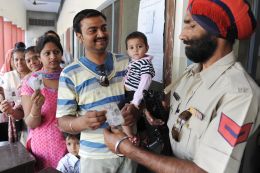 The election results in India seem to be in. The Congress Party has increased its power in the center and even some of the commenters here in The Langar Hall have been jubilant.
The election results in India seem to be in. The Congress Party has increased its power in the center and even some of the commenters here in The Langar Hall have been jubilant.
While the Indian elections have received brief commentary, here and there in The Langar Hall, the results call out for some analysis towards a Sikh perspective.
Overwhelming have been the shouts of “Singh is King” as it seems that Manmohan Singh will continue to keep the Prime Minister position, at least if his victory-speech is any indication, until his political overseers – the Gandhi family – are ready to replace the kursi-warmer with Rahul Gandhi. Others in The Langar Hall have already written critical pieces of this so-called Great Sikh Hype.
News media have rightly commented on the Congress Party’s sweeping electoral victories in Delhi on the party’s dumping of the mass-murderers Jagdish Tytler and Sajjan Kumar (albeit it seems more political maneuvering – with one of the positions filled by Sajjan Kumar’s brother, than any true remorse) and the projection of Manmohan Singh as a way to draw Sikh votes in Delhi away from BJP candidates. As a strategic community, Sikhs in no way should they tether their votes to a single party.
 At the Langar Hall, we’ve covered a number of Sikh candidates’ campaigns for local government office. I just wanted to include a brief update about Ravi Bhalla, who looks poised to become one of Hoboken’s first Sikh city councilmembers as he enters a run-off election next month:
At the Langar Hall, we’ve covered a number of Sikh candidates’ campaigns for local government office. I just wanted to include a brief update about Ravi Bhalla, who looks poised to become one of Hoboken’s first Sikh city councilmembers as he enters a run-off election next month:
While it is clear that Peter Cammarano and Dawn Zimmer will vie for the Hoboken mayoralty on June 9, the provisional ballots may still change the neck-and-neck race to see which of the last three of six council-at-large candidates get into the runoff on that date. […]
As of Tuesday night, it looked like the top six will be as follows:
[1.] Carol Marsh 3,719
[2.] Ravi Bhalla 3,698
[3.] Dave Mello 3,361 [link]
When we last covered this story, Ravi was running as an independent for office. Since then, he joined a “reform” slate and has been campaigning extensively. His success comes as a surprise to some, who don’t understand how a practicing Sikh could get so far…
Breakthrough is an innovative, international human rights organization using the power of popular culture, media, leadership development and community education to transform public attitudes and advance equality, justice, and dignity. Through initiatives in India and the United States, Breakthrough addresses critical global issues including violence against women, sexuality and HIV/AIDS, racial justice, and immigrant rights. [link]
A friend directed me to this video which reflects the use of media to educate society about human rights issue. The video I have included below is one of many produced by Breakthrough, an organization whose aim is to create a culture of human rights. “Breakthrough’s multi-media campaign, “Is This Justice?” aims to bring public attention to the stigma and discrimination faced by women living with HIV/AIDS-most of whom have been infected by their husbands or male partners.” I found this piece, titled A man looks at me but I’m the one who is being punished, to be quite powerful. Is this justice?
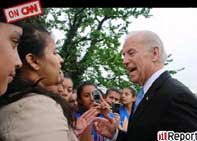
Gurbakhash Kaur Questioning Vice President Joe Biden
One of the major issues affecting the Sikh community is increasing civic engagement in the United States. We often focus on getting more Sikhs to vote and lobby our politicians about the issues affecting our community. This lobbying general pertains to writing letters and signing petitions that ask our community members to move beyond taking pictures with politicians at fundraising events or giving them awards at local melas. This past week, a young Sikh woman, Gurbakhash Kaur, highlighted what it means for a Sikh to be civically engaged. She questioned Vice President Biden “about two Sikhs in the United States Army who were told to cut their hair in order to serve” and Governor Jon Corzine about rising health education costs, while her Sikh peers stood by her side. These handshaking events were not a forum set-up for accountability, but more as photo-ops for the politicians. However, Gurbakhash Kaur was determined to make hand-shaking an opportunity to hold our elected officials accountable to their Sikh constituency.
As a resident of Lodi, New Jersey, she got face-time with Vice President Biden during his visit for a new construction project to widen Main Street and US Route 46. During her questioning, World Sikh News reports that:
Vice President Biden interrupted Kaur to tell her a member of his staff is a Sikh and did not allow her to finish her question. Afterwards, Kaur said, “I want the story to get coverage, as hardly anyone pays attention to our issues . . . we need a lot more legal support and begging and pleading to get our issues addressed.”
Ultimately, Gurbakhash Kaur’s actions are inspiring because she highlights an example of Sikh’s standing up for our rights through self-empowerment. More importantly, she acted through self-organizing rather than taking part in an event organized by other groups to mobilize the Sikh community.
Kuddos to Gurbakhash Kaur for demanding accountability from our elected officials!
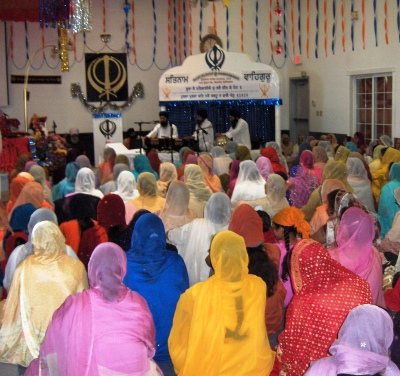 Phulkari’s post a few weeks back got me thinking about Gurdwaras – their origin and the role they play in Sikh society today. History tells us that Guru Nanak Patshah created Dharmshalas in Kartarpur where Sikhs would rise early and meet for Keertan, Veechar, reflection, and Guru-ka-Langar. It was a central element to the ideal society that Kartarpur would become.
Phulkari’s post a few weeks back got me thinking about Gurdwaras – their origin and the role they play in Sikh society today. History tells us that Guru Nanak Patshah created Dharmshalas in Kartarpur where Sikhs would rise early and meet for Keertan, Veechar, reflection, and Guru-ka-Langar. It was a central element to the ideal society that Kartarpur would become.
Over a century ago, Sikhs first arrived in North America – working at lumber mills, railroads, and as migrant laborers. They settled their families and chose to establish Gurdwaras (as early as 1908 in West Vancouver, BC and 1912 in Stockton, CA) to preserve both their spiritual and cultural roots in the land far from their history.
Now with hundreds of thousands of Sikhs in North America and the needs of our communities growing, the Gurdwara has expanded the services it offers far beyond its humble beginnings. Many Gurdwaras have Khalsa schools and libraries. Others plan for fitness centers, basketball courts, and healthcare clinics. One of the local Gurdwaras here hosts an annual Panjabi cultural show and mela, with weekly Giddha and Bhangra practices held at the Gurdwara facility itself. The North American Gurdwara has become not only a spiritual center, but also a community center, serving all the needs of the Sikh and Panjabi population.
On the one hand, I like having a Gurdwara as the center for our community’s activity. Although not all people have an initial interest in Sikhi, all these other events and programs at least keep people coming. And even a short “ritualistic” trip to the Gurdwara could develop in to something more. On the other hand, I can’t help but wonder…are we asking too much from our Gurdwaras?
With such different and competing interests, leaders fight for position so they can make their agenda the focus, and control Gurdwara resources accordingly. This drives much of the political drama and power struggles that surround our Gurdwaras today. As a result, many programs (such as Khalsa schools) end up mismanaged, poorly resourced, and inefficient.
Secondly, with all the programs our Gurdwaras offer, I question – are we taking away from the primary purpose of the Gurdwara…learning Gurmat (the Guru’s way)? How well do our Gurdwaras focus on Simran and Veechar? How well do our Gurdwaras connect the youth with the Guru’s message? What about services for non-Panjabi speakers or introducing non-Sikhs to our faith? What about programs emphasizing Sikh culture – like Gatka or Gurmat Sangeet? Are our Gurdwaras really institutions for learning? If the answer is less than perfect, shouldn’t we re-prioritize and change the focus of our Gurdwaras?
Many Gurdwaras serve small communities in rural areas where limited resources force the Gurdwara to serve multiple purposes. However, in larger communities, where resources are plenty – should we consider separating out our organizations? Maybe create separate Punjabi societies, Khalsa schools, clinics, and even Sikh community centers that focuses on outreach, youth counseling, and seva projects?
Perhaps under separate structures and management, these organizations will be able to thrive and meet their goals more efficiently with less resistance. And with our community’s growing needs, why not grow our presence with more diverse organizations?
Thoughts?
Kes is an important part of the Sikh identity but it also carries social, cultural, and political meaning for more than just Sikhs. Recently, a film student from NYU explored this less explored cross-cultural perspective by speaking with 3 individuals from various backgrounds in an interesting (and short-18 minute) documentary.
The film engages with a Sikh (Sonny Singh from the Sikh Coalition’s New York office), an African-American woman, and a woman with trichotillomania – a disorder that causes the sufferer to compulsively pull out hair. We often consider kes in the context of religion, beauty, and identity; but rarely do we do so in a cross-cultural perspective (unless you grew up in a culturally diverse community). The film is thoughtful and thought-provoking, so I’ll let it speak for itself. It includes footage from the recent Sikh Day parade in New York City, as well as a pagh tying competition in Richmond Hill.
[hat tip: sonny]
Hair… As one of the most important aspects of how others see us, how has our hair become interwoven with issues of race, religion, beauty, and identity?
Sikhism mandates that the hair is never cut. We explore the rationale behind this and the discrimination that Sikhs face today in a post 9-11 world.
Many women of African descent grow up to think negatively about their natural hair. So begins the burdensome, expensive, and often painful process of weaves and chemical straightening, as a however subconscious attempt to achieve a homogenized concept of beauty. We speak to a woman who takes pride in her natural hair and is committed to show others how truly beautiful “nappy” hair can be.
Sometimes what we do with our hair is not a choice. Trichotillomania is a disorder that causes the sufferer to compulsively pull out hair. We will meet a long-term lash/brow puller who describes how people have reacted to her disorder and how these experiences have shaped her. [link]
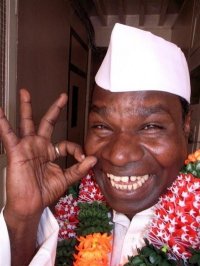
The last day of India’s 5 day, 6 week general election is tomorrow, May 13th. And only one political party has been speaking honestly about what they will do for the country post-election: Bleed India. Pappu Raj is the candidate. And select excerpts from his “moneyfesto” are as follows:
On Taxes: “Direct taxes will come Directly – to me.”
On Global Warming: “Buy A/C.”
On Heartfelt Public Health: “Run Round in Circle Act. : Run from one department to another one: Round and Round. Round and Round. This is the aerobic exercise. It gives the good muscles, improves heart and Cardio. Plus blood will flow. And we are liking your blood.”
On Jail Reform:

 “…the first troubling clues in the late 1980s and early ’90s: Peacocks – India’s national bird – disappeared from the fields.”
“…the first troubling clues in the late 1980s and early ’90s: Peacocks – India’s national bird – disappeared from the fields.”
A recent story on NPR discussed the “cancer train” in Punjab. The train is so named as it routinely carries about 60 patients and their families from Bathinda to the town of Bikaner in order to get treatment at the government’s regional cancer center. Studies now suggest that populations with high use of pesticides have an increased risk of cancer. This seems to be the case in Punjab, where the introduction of the Green Revolution in the 1960s not only led to increased production of agriculture but also adverse health outcomes. The NPR piece discusses how villages that use pesticides were shown to have higher rates of cancer than villages that did not use pesticides.
On a recent evening, just before the train arrives, waiting passengers wrapped in shawls sit glumly on the bare pavement. Vendors hawk tea and chapattis. “He has blood cancer,” says one man, explaining his upcoming journey by gesturing at his skinny, pale 16-year-old son, Jassa Singh, beside him. Another man points toward his little boy, and says bone cancer has attacked his hip.
A gaunt but dignified-looking man wearing a bright yellow turban says he is going to Bikaner for treatment of cancer in his throat. “It’s difficult to talk,” he says, pushing a button in a device inserted in his throat that makes his voice sound like a computer synthesizer.
It is important to note, however, that as with many public health studies – an association between pesticide use and cancer does not necessarily suggest a causal link. Many people are hesitant to blame the Green Revolution and new technologies on the prevalence of cancer in Punjab. Neverthless, it seems clear that the correlation with the higher rates of cancer can not be understated and suggests that environmental factors could quite possibly be the cause.
 For those that follow The Langar Hall, Ruby Dhalla is no stranger to our coverage on Canadian politics. Whether it be on our list of Sikh MPs throughout the world, a Sikh Barack Obama, a horrible beating that is symptomatic of the nightmare that is the Punjab Police, or even attendance at NRI Punjabi conference, she has found mention.
For those that follow The Langar Hall, Ruby Dhalla is no stranger to our coverage on Canadian politics. Whether it be on our list of Sikh MPs throughout the world, a Sikh Barack Obama, a horrible beating that is symptomatic of the nightmare that is the Punjab Police, or even attendance at NRI Punjabi conference, she has found mention.
In this post, she becomes the focus. Since last week after the Star published a story, Ruby Dhalla, the Liberal Member of Parliament, representing Brampton-Springdale, has been on the receiving end of a flood of media criticism for the following allegations
[Immigrant home care-givers] claimed that they earned $250 a week working 12- to 16-hour days at the Dhalla family home, that Dhalla herself had seized their passports and that other family members made them wash cars, shovel snow and clean chiropractic clinics owned by the family. [link]
The Canadian press has had a field day and has likened the case to the controversy that led to Eliot Spitzer’s resignation as the governor of New York due to his relationship with a prostitute after being seen as a ‘moralizer.’ Ruby Dhalla has been known to champion immigrant rights issues and women and thus it is for this reason that the allegations have been such damning.
The crisis of Sikh identity was once described to me in very simple terms; most Sikh males no longer want to look like Sardars and most Sikh girls don’t want to marry Sardars. In fact, I distinctly remember several Sikh guys that I went to school cutting their hair for the simple reason of “getting girls”.
Over the past few years, we’ve seen efforts on many fronts to confront this trend, including beauty pageants (Mr. Singh International), Sikh models (Sunny Singh Caberwal of Kenneth Cole and now GQ fame). Now, in a twist on the standard Sikh dharmak or religious song, Taranmpreet has released a track called “Teri Meri Bas: Sat Sri Akal”.

Last year I commented on the UK government spending over £100,000 to (unsuccessfully) figure out how to create appropriate gear for Sikhs recruited into their anti-terror corps. It also wasted a lot of time for a Sikh officer who had been recruited to serve in the corps and then kept in limbo without assignment for over a year.
Well, someone somewhere got the memo. The still new BSPA is working with scientists to design and provide a Kevlar turban for its 2,000+ Sikh police officers, explaining that currently there is no other safe and religiously-appropriate option. The failure to provide this gear directly impacts the employment options and pathways of British Sikhs who serve as police:
Sikh officers have been prohibited from becoming firearms officers because our religion does not allow us to remove the turban…
There has been some research done into producing a ballistic material for turbans and we would like to follow any opportunity where we could manufacture a ballistic product – made out of something like Kevlar – that would ensure a certain degree of protection so Sikh police officers could take part in these roles.
If these turbans are actually useable and wearable, they could open professional options for Sikhs across a swathe of high risk “law and order” positions (and no doubt, the military). On the other hand, a Kevlar turban sounds terribly uncomfortable, and also seems like a somewhat strange alteration of the turban itself. Maybe I am having a hard time wrapping my head around the concept, but I’m not entirely sure how a Kevlar turban could be designed to be both religiously appropriate and, well, a solid hunk of material.
![]() In all honesty, I have grown tired of bhangra. Gone are my days of competing; gone are my days of organizing; gone are my days of even caring.
In all honesty, I have grown tired of bhangra. Gone are my days of competing; gone are my days of organizing; gone are my days of even caring.
Still sometimes there are things that are newsworthy and call for praise and attention. This is one such story.
The Pioneer Bhangra competition, hosted by CSU East Bay’s Associated Students Association, had originally scheduled their competition at Chabot College Performing Arts Center in Hayward on June 6, 2009. The date should immediately ring alarm bells. It was to fall on the day of the 25th year of commemoration of Operation Bluestar (the Third Sikh Ghallughara) in 1984.
If you’re in the DC area on Friday and are free in the afternoon, head over to the Library of Congress at 1:00 pm. Nikky Guninder Kaur Singh, author of “The Feminine Principle in the Sikh Vision” among other works, will be speaking in the  Mary Pickford Theatre on the 3rd floor of the Madison Building.
Mary Pickford Theatre on the 3rd floor of the Madison Building.
When: May 8, 1:00 pm-2:00 pm
Where: Mary Pickford Theater, 3rd Floor, James Madison Building,Library of Congress
101 Independence Ave., SE, Washington, DC 20540
(Metro stop: Capitol South on the Blue/Orange Line)
What: “The Feminine Principle in the Sikh Vision”
by Dr. Nikky Guninder Kaur Singh, Crawford Family Professor of Religious Studies at Colby College
Click on flyer to see full-size.
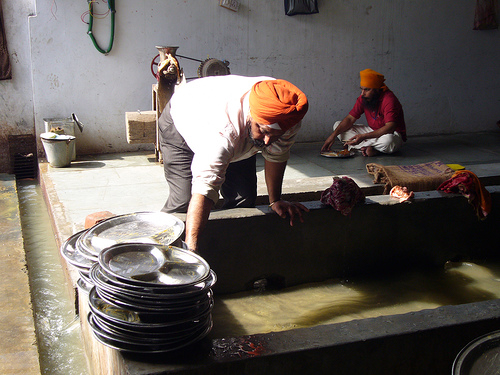 On TLH we have discussed Green Gurdwaras. Part of this green initiative is to use steel plates (i.e. thaals) and cutlery instead of the common paperware. A couple of weeks ago at a local Gurdwara langar, I saw steel plates being used that had been stored away in cupboards for years. Every week disposable cups, plates, spoons and forks were used by the sangat. Somehow in a community with a growing immigrant Punjabi population disposable means modernity. I remember watching sangat members come stand in the standard langar line and show surprise as they reached the front and saw large piles of steel plates. The reactions were amazing. We had aunties with twitched noses who continued to scrub the steel plates although they had been cleaned and washed the night before and showed no signs of being dirty. Uncles made comments like, “hun taan aapaan Punjab ton nikal gaye, a hun desi kamm ithhe vi shuru kar taa”. Others just smirked and laughed.
On TLH we have discussed Green Gurdwaras. Part of this green initiative is to use steel plates (i.e. thaals) and cutlery instead of the common paperware. A couple of weeks ago at a local Gurdwara langar, I saw steel plates being used that had been stored away in cupboards for years. Every week disposable cups, plates, spoons and forks were used by the sangat. Somehow in a community with a growing immigrant Punjabi population disposable means modernity. I remember watching sangat members come stand in the standard langar line and show surprise as they reached the front and saw large piles of steel plates. The reactions were amazing. We had aunties with twitched noses who continued to scrub the steel plates although they had been cleaned and washed the night before and showed no signs of being dirty. Uncles made comments like, “hun taan aapaan Punjab ton nikal gaye, a hun desi kamm ithhe vi shuru kar taa”. Others just smirked and laughed.
There were also positive reactions where aunties and uncles supported the langar sevadars for reintroducing steel plates. These sangat members felt that these plates helped reduce waste while encouraging the action of seva. Interestingly, they said more seva is done by cleaning jutha plates than by just throwing them away. By cleaning jutha plates, it reinforced a sense of humility of cleaning other peoples’ waste. In addition, some people showed a lot of humility by refusing to allow the sevadars to take and wash their plates. For example, an elderly woman, who had difficulty walking, slowly took her plate inside the kitchen and washed it herself. Lastly, a number of sevadars, aside from the family doing langar seva that week, decided to help clean plates. An assembly line of cleaners and dryers was set-up. Some spoke and others just quietly felt the spirit of doing seva together. Ultimately, by reintroducing steel plates the spirit of seva was rekindled in a new way.

